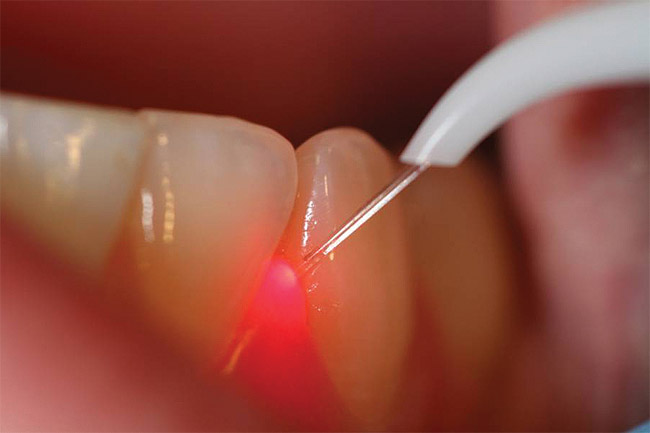Laser Dentistry

Laser dentistry (Dental Laser) can be a precise and effective way to perform many dental procedures. The potential for laser dentistry to improve dental procedures rests in the dentist’s ability to control power output and the duration of exposure on the tissue (whether gum or tooth structure), allowing for treatment of a highly specific area of focus without damaging surrounding tissues.
Benefits of laser dentistry?
- Procedures performed using soft tissue dental lasers may not require stitches.
- Certain laser dentistry procedures do not require anesthesia.
- Laser dentistry minimizes bleeding because the high-energy light beam aids in the clotting (coagulation) of exposed blood vessels, thus inhibiting blood loss.
- Bacterial infections are minimized because the high-energy beam sterilizes the area being worked on.
- Damage to surrounding tissue is minimized.
- Wounds heal faster and tissues can be regenerated.
How Do Lasers Work in Dentistry?
A laser is an instrument that produces a very narrow, intense beam of light energy. When laser light comes in contact with tissue, it causes a reaction. The light produced by the laser can remove or shape tissue. All lasers work by delivering energy in the form of light. When used for surgical and dental procedures, the laser acts as a cutting instrument or a vaporizer of tissue that it comes in contact with. When used for “curing “a filling, the laser helps to strengthen the bond between the filling and the tooth. When used in teeth whitening procedures, the laser acts as a heat source and enhances the effect of tooth beaching agents.
Advantages of using laser:
- May cause less pain in some instances, therefore, reducing the need for anesthesia
- May reduce anxiety in patients uncomfortable with the use of the dental drill
- Minimize bleeding and swelling during soft tissue treatments
- May preserve more healthy tooth during cavity removal
Video – Laser Gum Treatment
